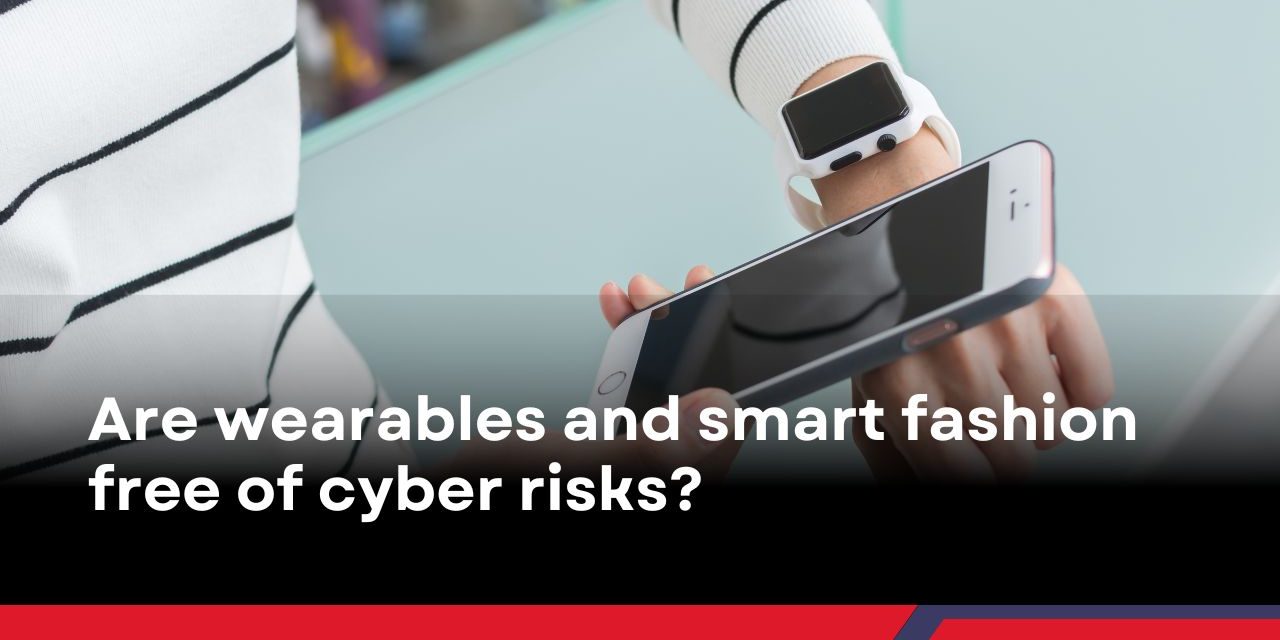Wait until tech-fashionistas and avid fans of wearables face a global coordinated attack never thought possible!
With the worldwide rise of AI, concepts such as “techwear” and “smart fashion” combine lifestyle garments with advanced technologies, to boost the clothing’s comfort and functionality.
However, with advanced technology and connectivity come cyber risks.
This is why the analysts at Check Point Software Technologies have shared their concerns with CybersecAsia.net.
Let us examine the two cyber fashion segments in turn, to raise awareness of the potential cyber risks involved.
- Techwear
“Techwear”, also known as “tech clothing” combines high functionality, durability, and modern design with technological innovations such as waterproof, breathable materials; built-in LED lighting (for safety at night); smartphone-controlled heating elements; and adaptive materials that react to environmental conditions.
And here is where the problem starts: any connected device, including smart clothing, can be hacked. Real-world examples show that even seemingly harmless devices like smart light bulbs and other smart devices can be compromised.
The risks escalate when smart tech is used in military contexts. There are now textiles that change their appearance in response to the strength of the ambient wind, temperature, or pressure. Such clever camouflage elements could have uses in the military, but interference with the heating elements or adaptive camouflage could have serious consequences, potentially being weaponized against wearers.
- Wearable technology
Worn together with clothing and accessories, devices of this genre include smartwatches, fitness trackers, and smart rings that track physical activity, health data, and facilitate contactless payments. These devices, with access to sensitive information, are prime targets for cybercriminals.
Stolen data can be exploited for personalized attacks or sold on the Dark Net. Hackers could use stolen exercise data to craft convincing phishing schemes, convincing their potential victims to fall for identity scams. Data from biometric sensors built into clothing can supply health metrics (heart rate, breathing, and muscle activity) which hackers can modify to trick wearers into thinking they are in danger… unless they visit a supplied (malicious) URL to seek help. Worse, hackers could hijack certain critical medical devices (such as connected pacemakers), demanding ransoms to restore functionality. Even seemingly routine devices such as smart glasses or contact lenses could be hacked to distort a wearer’s vision, severely disrupting the device’s functionality for various agendas.
Also, connected microphones and speakers embedded into clothing could be hacked for eavesdropping. Imagine if hackers or business competitors find a way to eavesdrop and spy on high-profile victims to steal trade secrets and insider information.
Similarly, smart devices that enable payments are particularly vulnerable, making them attractive targets for financial theft.
In addition, as wearable technologies are usually connected to a mobile phone, home/corporate network and various cloud services, they can form part of a vulnerable “supply chain” that is an easy target for cybercriminals to leverage to infiltrate the latter infrastructures.
In terms of data privacy, wearers are also giving up access of their sensitive data to the manufacturers, who can be hacked or implicated in data breaches at any point, no matter how trusted they currently are.
The Devil is in the connectivity
As more and more smart devices are integrated into clothing, cyberattack surfaces and agendas will be expanding.
According to Check Point’s Regional Director, Security Engineering (Eastern Europe), Peter Kovalcik, attackers can gain control over smart clothing, manipulate features such as heating elements, potentially causing harm. “GPS modules could be misused for stalking or privacy invasion, and integrated microphones and cameras could be exploited for espionage. The challenge of updating and patching vulnerabilities in these devices makes them an easy target for cybercriminals, who can exploit known weaknesses long after discovery,” Kovalcik explained.

The integration of technology into fashion is revolutionizing the comfort and functionality of clothing. However, as with most other innovations, we face cybersecurity challenges that must not be underestimated.
Smart fashion is a real threat that could have a serious impact on the functioning of critical organizations and even on the lives of users. It is therefore necessary to pay attention to every detail and not to underestimate the security of any smart element, Kovalcik reiterated.
So, live stylishly and futuristically, but make sure cybersecurity is always being checked and monitored for compromises.

















